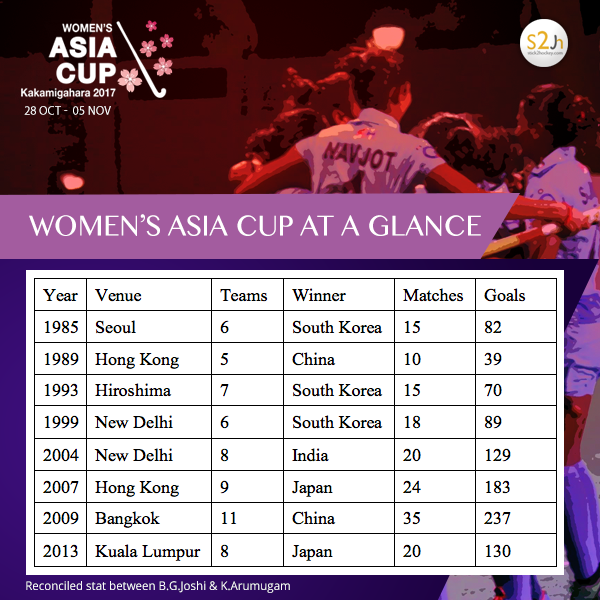Korean women rule the root in the Asia Cup
Share
South Korea and Japan are the only two nations to represent all the eight Women’s Asia Cup held so far. India and China missed a number each, but alternatively posed a stiff challenge for Korea’s suzerainty. These four nations together formed the cream of Asia in the women’s circuit.
The all-present Korea and Japan dominated the Asian scene for better part of Asia Cup, collecting 13 medals out of 24 including five gold and five Silver.
The South Koreans girls dominated the Asian scene, challenge coming in from China, India and Japan, but the Koreans were a hard nut to break.
For others in Asian circuit, Korea set the bench mark.
Korea won the Gold in the inaugural edition and followed it up in 1993 and 1999. When it preferred to send the senior team to Auckland Olympic Qualifier, their second string came to India to defend the title in the early 2004. The hosts India benefitted out of the situation. It beat Korea in the semis in an one-sided encounter (0-5).
It is the only occasion the Koreans went medalless in their eight Asia Cup entries.
Otherwise, the Koreans with their fleet feet and aggressive style kept themselves notches above the others.
Other Korean medals include Silver in 2007 & 2013, bronze 1989 & 2009.
Koreans have struck about 30 goals in each edition, which is the highest for any country.
Asia Cup for Women produced in all 959 goals in 157 matched held so far. Though the first four editions produced a conservative figure of 280 goals, averaging 70 per edition, the scoring prowess increased subsequently. Last four editions saw an average of 170 goals per edition.
Maximum goals came in Bangkok which saw eleven teams fight it out, the largest field ever. 35 matches produced 237 goals.
Asia Cups were played on different formats so far. The first two editions were held on round robin basis. League cum knock out was a regular feature since then.
The Kakamigahara number, however, will see for the first time Quarterfinal format.
Note: Joint authors K. Arumugam and BG Joshi work extensively on statistics. They have recently reconciled their women hockey data for the sake of uniformity and correctness.



